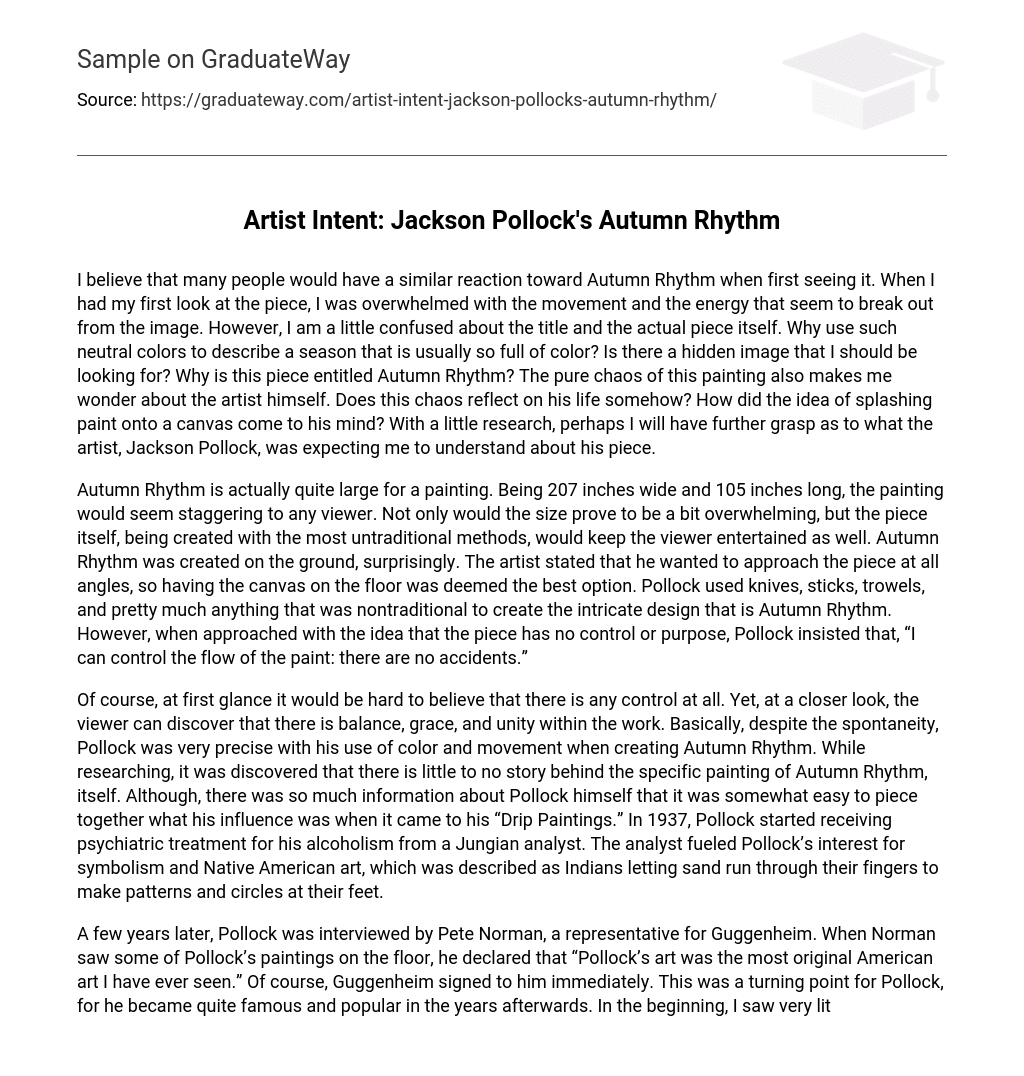When first seeing Autumn Rhythm, many people may have a similar reaction. The movement and energy that seem to break out from the image can be overwhelming. However, the title and the actual piece itself can be a little confusing. Why describe a season that is usually so full of color with such neutral colors? Is there a hidden image to look for? Why is this piece titled Autumn Rhythm? The chaotic nature of this painting also makes one wonder about the artist. Does this chaos reflect on his life somehow? How did the idea of splashing paint onto a canvas come to his mind? With further research, a better understanding may be gained about what Jackson Pollock intended for viewers to comprehend about his piece.
Autumn Rhythm is a large painting, measuring 207 inches wide and 105 inches long, which can be quite overwhelming for viewers. Additionally, the painting’s unconventional creation process adds to its appeal. Surprisingly, the artwork was created on the ground, allowing the artist to approach it from every angle. To bring the intricate design of Autumn Rhythm to life, Pollock utilized knives, sticks, trowels, and other nontraditional tools. Despite the perception that the piece lacks control or purpose, Pollock insisted that he can indeed control the flow of paint and that there are no accidents.
Upon first glance, it may be difficult to believe that the work lacks any control. However, upon closer inspection, one can witness the presence of balance, grace, and unity within the artwork. Despite its spontaneous nature, Autumn Rhythm demonstrates Pollock’s precise use of color and movement. While researching, it was discovered that there is minimal background information regarding the specific creation of the painting. Nonetheless, extensive information about Pollock himself allowed for a glimpse into his influence on his “Drip Paintings.” In 1937, Pollock began receiving psychological treatment for his alcoholism under a Jungian analyst. This analyst ignited Pollock’s fascination with symbolism and Native American art – specifically, the art of Indians creating patterns and circles by allowing sand to flow through their fingers and onto the ground.
A few years later, Pollock was interviewed by Pete Norman, a representative for Guggenheim. When Norman witnessed some of Pollock’s paintings on the floor, he proclaimed that “Pollock’s art was the most original American art I have ever witnessed.” Naturally, Guggenheim immediately signed him. This marked a turning point for Pollock as he gained significant fame and popularity in the subsequent years. Initially, I had limited exposure to Pollock’s paintings. However, now that I comprehend some of the context behind his work, I recognize and value the tremendous amount of time and effort he invested in expressing himself on canvas. His life was arduous, and all he desired was for his audience to comprehend the perpetual chaos he experienced. I previously admired his paintings, but now I feel an enduring connection to this particular piece.





